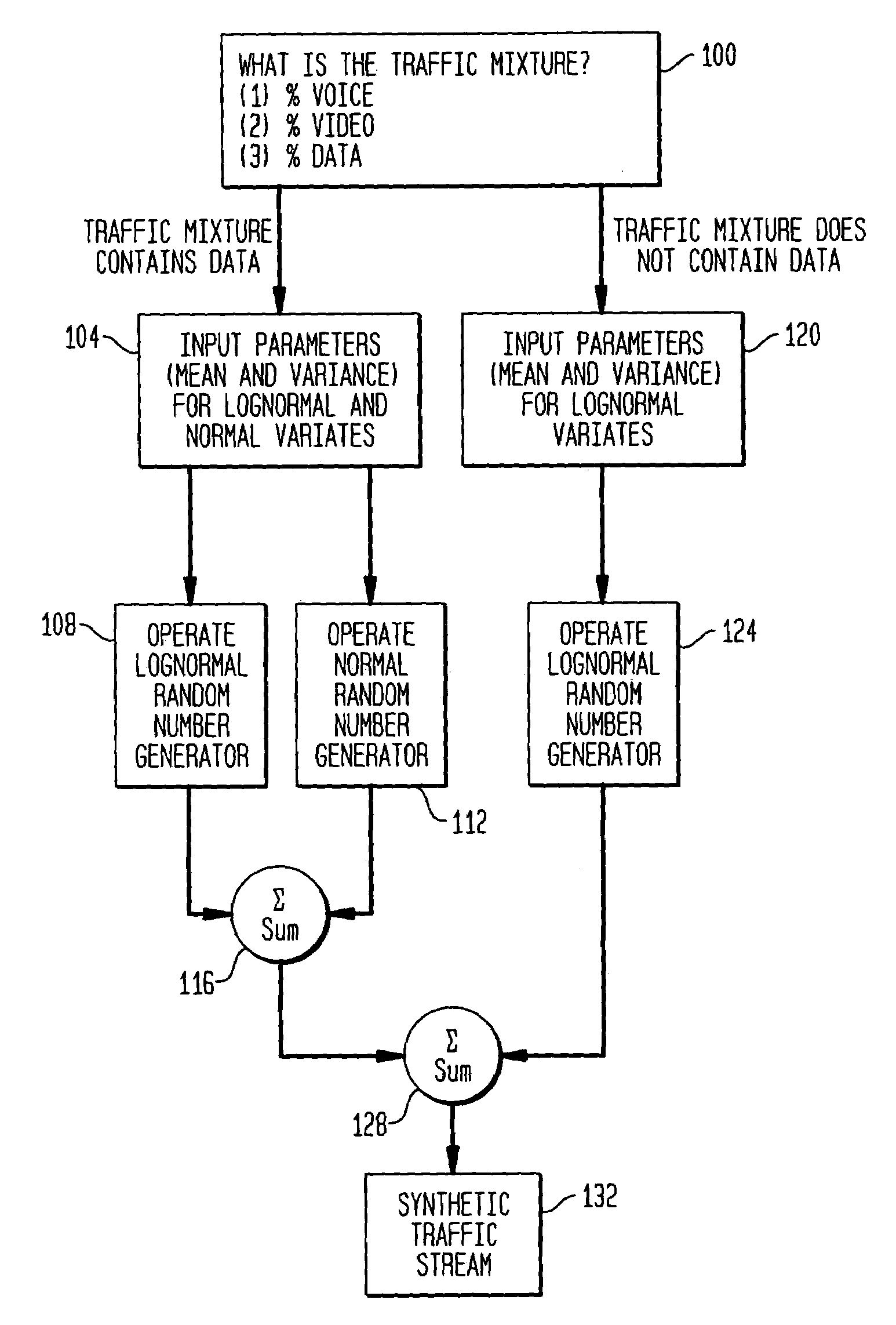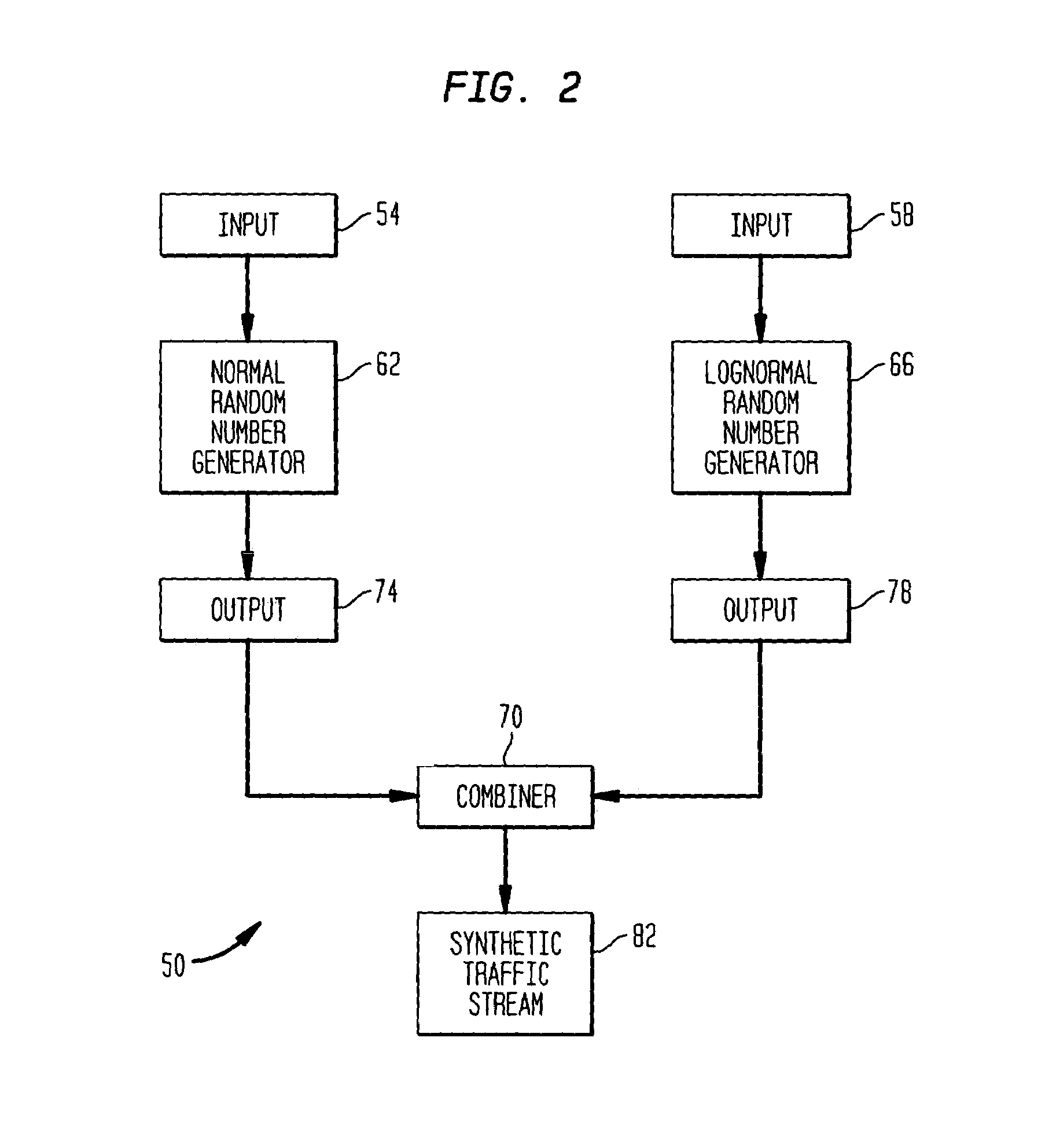Traffic simulation algorithm for asynchronous transfer mode networks
- Summary
- Abstract
- Description
- Claims
- Application Information
AI Technical Summary
Benefits of technology
Problems solved by technology
Method used
Image
Examples
Embodiment Construction
[0030]Referring to FIG. 1, a typical ATM switching architecture is depicted. The ATM switch 10 includes a switch buffer 14 and switch controller 18. Although an ATM cell or packet in the traffic 22 entering the switch 10 contain bits for discard priority, it is preferable to slow the traffic 22 down rather than degrade the level of service by discarding packets. Flow-control mechanisms in the switch controller 18 limit the arrival rate when the distination buffers become full. In other words, packets which arrive after the buffer is full must wait until buffer space is made available by departing packets. The overflow traffic can thus result in a virtual overflow buffer 26 whose size depends on the transmission speed and buffer size of the switch. As cells are drained away from the buffer 14, cells waiting in the virtual overflow buffer 26 are admitted to the buffer 14.
[0031]A very desirable feature of ATM switches is that they are priority-based and policy-based. Priority-based ref...
PUM
 Login to View More
Login to View More Abstract
Description
Claims
Application Information
 Login to View More
Login to View More - R&D
- Intellectual Property
- Life Sciences
- Materials
- Tech Scout
- Unparalleled Data Quality
- Higher Quality Content
- 60% Fewer Hallucinations
Browse by: Latest US Patents, China's latest patents, Technical Efficacy Thesaurus, Application Domain, Technology Topic, Popular Technical Reports.
© 2025 PatSnap. All rights reserved.Legal|Privacy policy|Modern Slavery Act Transparency Statement|Sitemap|About US| Contact US: help@patsnap.com



